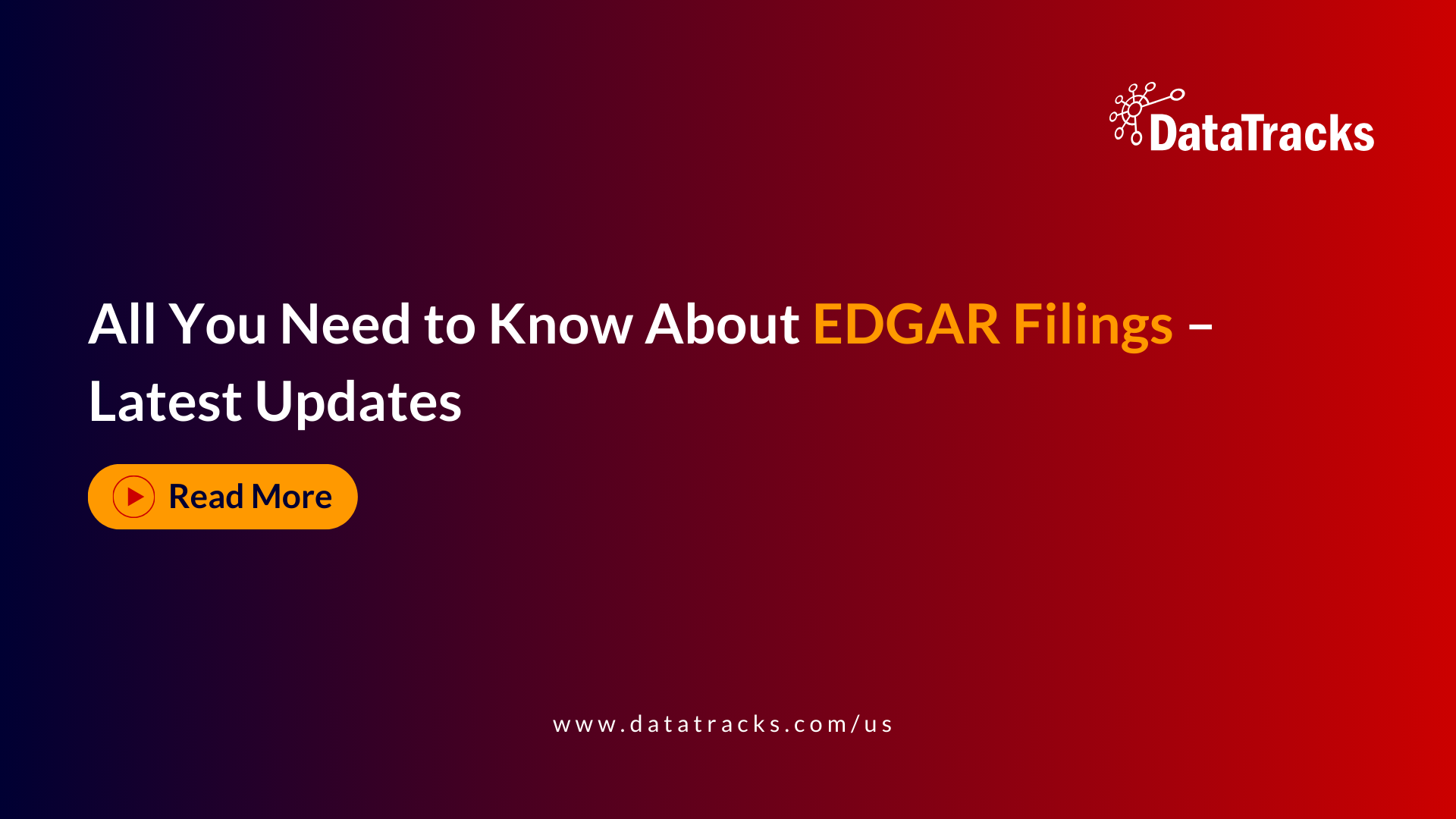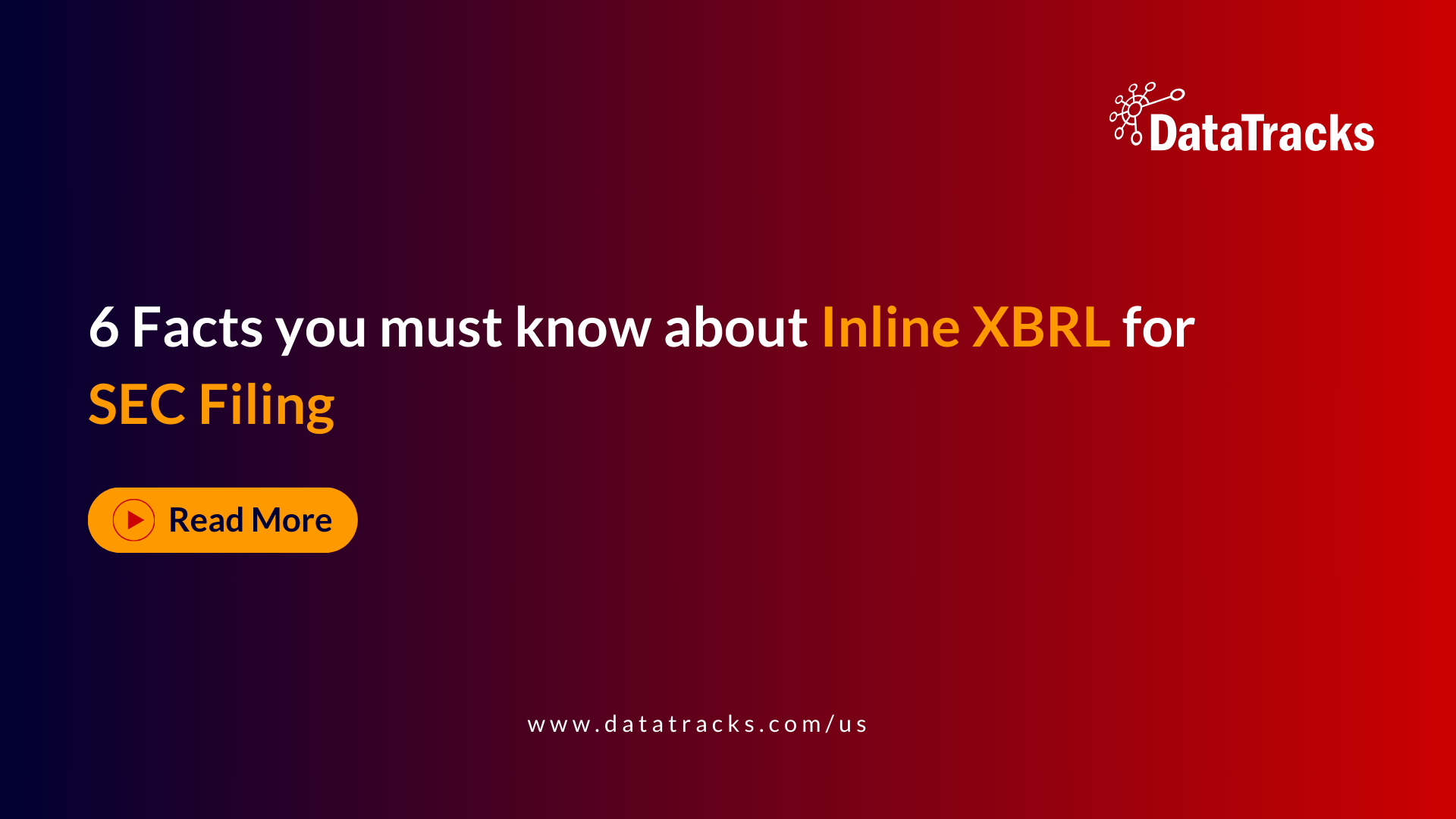6 facts you must know about Inline XBRL for SEC Filing
The U.S. Securities and Exchange Commission (SEC) embraces advanced technology at a faster pace than expected. The commission’s 2009 rule requiring the use of eXtensible Business Reporting Language (XBRL) was upgraded to a 2018 mandate calling for the use of the Inline XBRL (iXBRL) submission format that makes the filings document human- and machine-readable. This represents laudable strides on behalf of the SEC to adopt technology for improving efficiency, accuracy, and analysis capabilities.
Here is a list of 6 essential facts about iXBRL to make your filing experience faster and easier.
-
It eliminates instances of error
This new rule eliminates the requirement of filers to post XBRL data to their websites. iXBRL allows filers to embed XBRL data directly into their filings instead of including them as attachments, reducing the likelihood of human error.
-
You get to drive
iXBRL gives you or any preparer complete control over the presentation of XBRL disclosures within the HTML filing. You get to decide how you present your information.
-
No taxonomy change
It’s just the file format in which the SEC accepts submissions that are changing. The scope of tagging, taxonomy, and rules remain the same. In place of an XBRL document, you will need to generate and file an iXBRL one.
-
Impact on document creation
No more having to create an EDGAR-compliant HTML and an XBRL separately. With Inline XBRL, there is only one report that needs to be filed along with the company extended taxonomy.
In fact, with DataTracks’ Rainbow or Glacier, the process becomes significantly easier. You can integrate your existing excel data with our on-cloud software platform to generate an accurate inline XBRL compliant, single-source disclosure document. It’s easy and doesn’t disrupt your current document creation process.
-
The need for specific technology
The structure and rules of an iXBRL document have been defined and need to comply with the Inline XBRL 1.1 specification. Additionally, HTML rules for tags, attributes, and attachment types must be considered from the EDGAR Filing Manual. Therefore, a valid iXBRL document should consider these specific structural requirements and compile them into one. Sounds difficult? Don’t worry. DataTracks’ Rainbow – our flagship application creates inline XBRL documents compliant with the SEC’s EDGAR Filing Manual and Inline XBRL specification.
-
Is Inline XBRL report mandatory?
U.S. GAAP filers had a three-year phase-in to comply with the Inline XBRL requirements as follows, beginning with fiscal periods ending on or after:

IFRS filers will be required to comply with Inline XBRL beginning with fiscal periods ending on or after June 15, 2021.
However, domestic form filers will not become subject to the requirement until their first Form 10-Q is filed for a fiscal period ending on or after the applicable compliance date, instead of the first filing for a fiscal period ending on or after that date.
In summary, the shift to iXBRL helps:

However, to truly leverage its maximum potential, the best step you can take is to pick a reporting solution that generates an iXBRL compliant report with minimal effort from your end. Finding a reliable solution and a worthy solution provider can be a challenging task. To streamline your SEC reporting and compliance, you will need the help of experts who can instil confidence in your ability to meet regulatory compliance mandates through the support of robust software.
DataTracks, with a presence in 26 countries, has had over 18 years of experience in the field of compliance reporting. Having generated close to 348,000 reports, we have ensured the quality and assurance of proper reporting support at competitive prices. In addition, our data confidentiality and efficient working have earned us 23,500 happy clients.
To learn more and start your compliance journey, schedule a discussion with an iXBRL expert.
FAQs on SEC iXBRL Reporting
What is SEC iXBRL reporting?
SEC iXBRL (Inline XBRL) reporting refers to the submission of financial statements and other regulatory filings to the U.S. Securities and Exchange Commission (SEC) in a format that integrates both human-readable and machine-readable data. This allows for more efficient and accurate analysis of financial data by investors, analysts, and the SEC itself.
What are the main iXBRL requirements for SEC reporting?
To meet the SEC’s iXBRL reporting requirements, you need to tag all financial statement information, notes, and schedules using the iXBRL format. This means the data should be easy to read for both people and computers, making it simple for users to access and understand the information. You also need to ensure your reports follow the latest SEC guidelines and taxonomy updates.
Why is iXBRL compliance important for SEC filings?
iXBRL compliance is key for SEC filings because it boosts the transparency, accuracy, and accessibility of financial data. With iXBRL-compliant reports, stakeholders can easily analyze and compare financial information, helping them make better investment decisions and improving regulatory oversight. Not complying with these standards can lead to penalties and harm your company’s reputation.
What specific inline XBRL requirements should companies be aware of?
Companies need to know a few critical inline XBRL requirements: using the SEC’s approved taxonomies, tagging financial statements and footnotes accurately, and ensuring the reports are both human-readable and machine-readable. Additionally, it’s important to validate your iXBRL filings to ensure they meet SEC standards before you submit them.
How can companies ensure they are iXBRL-compliant for SEC reporting?
To make sure they meet iXBRL compliance for SEC reporting, companies can use specialized financial reporting tools and solutions that support iXBRL tagging and validation. Here’s what can help:
- Use the Right Tools: Invest in financial reporting tools and software that are designed to handle iXBRL tagging and validation.
- Stay Updated: Regularly update your reports with the latest SEC taxonomies to ensure compliance.
- Thorough Reviews: Conduct thorough reviews and validations of your reports to catch any errors or issues before submission.
- Stay Informed: Keep up-to-date with SEC reporting guidelines and any changes to ensure you’re always compliant.
- Seek Professional Help: Many organizations use professional services or software solutions to manage and streamline this process effectively. DataTracks, for instance, offers robust ixbrl software solutions that can help ensure your reports are accurate, compliant, and submitted on time.




